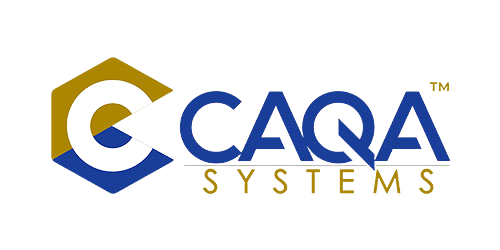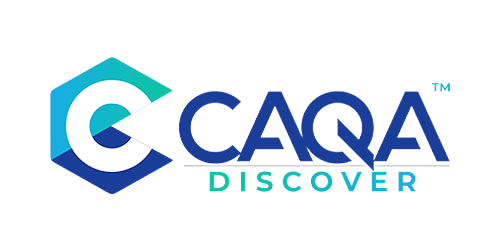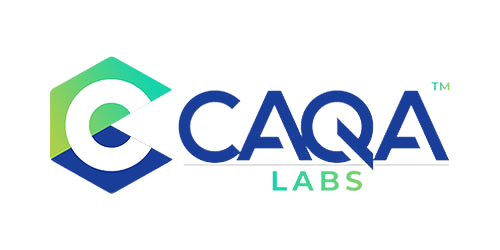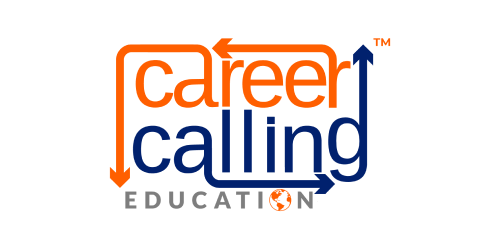The vocational education and training sector has long grappled with one of its most persistent challenges: how to effectively teach diverse groups of learners who arrive with vastly different skill levels, experiences, and learning speeds. Walk into any vocational workshop today, whether it's a carpentry class, an IT training lab, or a healthcare simulation centre, and you'll find this reality playing out. Some students arrive with years of informal experience but no formal qualifications, others come straight from school with theoretical knowledge but limited practical skills, and still others are career changers starting from scratch. This diversity, while enriching the learning environment, presents trainers with a complex pedagogical puzzle that demands sophisticated solutions.
The answer lies in scaffolding, a teaching approach that has evolved from a simple metaphor borrowed from the construction industry into a sophisticated pedagogical framework that transforms how we think about skill development in vocational education. Just as construction workers use temporary structures to support a building during its construction, educational scaffolding provides temporary support structures that help learners build their skills systematically, with supports gradually removed as competence grows. This approach has proven particularly powerful in vocational settings where the gap between knowing and doing must be bridged through careful, structured practice.
What makes scaffolding particularly compelling for vocational education is its inherent flexibility and responsiveness to individual learner needs. Unlike traditional one-size-fits-all approaches that often leave beginners overwhelmed and advanced learners bored, scaffolding creates a dynamic learning environment where every student can progress at their optimal pace while still participating in shared learning experiences. This balance between individual progression and group cohesion is crucial in vocational settings where collaborative skills and peer learning are as important as individual competency development.
The transformation of scaffolding from theory to practice in vocational education requires more than just understanding its principles; it demands a practical framework that trainers can implement in their workshops, labs, and training facilities. Through years of refinement and adaptation across various vocational disciplines, a four-step scaffolding sequence has emerged as particularly effective for managing mixed-skill groups while ensuring both beginners and advanced learners are appropriately challenged and supported.
The Foundation: Understanding the Four-Step Scaffolding Sequence
The power of the four-step scaffolding sequence lies in its elegant simplicity combined with its sophisticated ability to accommodate learner diversity. This framework moves learners through a carefully orchestrated progression from observation to independence, with each stage providing differentiated support based on individual needs. The sequence begins with modelling and demonstration, where the instructor takes centre stage to show how tasks should be completed. This initial phase is far more than simple show-and-tell; it's a carefully crafted performance that breaks complex skills into manageable components while maintaining the coherence of the whole task.
During this modelling phase, instructors employ what cognitive scientists call "thinking aloud," verbalising not just what they're doing but why they're doing it, what they're watching for, and how they're making decisions. For beginners, this provides essential insight into the mental processes that underpin skilled performance, while advanced learners benefit from understanding the reasoning behind techniques they may already perform intuitively. The instructor might deliberately slow down certain movements, exaggerate key actions, or repeat critical sequences to ensure all learners can follow along. Visual aids, diagrams, and supplementary materials support different learning styles, ensuring that whether a student learns best through watching, listening, or reading, they have access to the information they need.
The second step transitions into guided group practice, where the dynamic shifts from instructor-centred demonstration to collaborative engagement. Here, the entire group works together on the task, but with carefully calibrated levels of support. Beginners might work directly alongside the instructor, following step-by-step guidance with frequent check-ins and corrections. Intermediate learners might work in pairs, supporting each other while referring to process cards or checklists. Advanced learners might take on mentoring roles, explaining steps to others or tackling more complex variations of the basic task. This phase embodies the social learning theory principle that we learn not just from instruction but from observing and interacting with peers at various skill levels.
The beauty of guided group practice lies in its ability to create a supportive learning community where mistakes become learning opportunities rather than failures. When a beginner struggles with a particular step, they can immediately see how others approach the same challenge. When an advanced learner explains a technique to a peer, they deepen their own understanding through the act of teaching. The instructor circulates throughout this phase, providing targeted feedback, answering questions, and ensuring that no learner falls too far behind or races too far ahead without consolidating their learning.
Step three marks the transition to independent or tiered practice, where learners begin to take ownership of their skill development. This phase represents a critical juncture in the learning process, as students move from supported practice to autonomous performance. However, independence doesn't mean isolation. Support structures remain in place but are activated only when needed, like training wheels that don't touch the ground unless the bicycle starts to tip. Beginners might still have access to detailed guides and peer coaches, but they're encouraged to try solving problems independently before seeking help. Intermediate learners work with less detailed instructions, perhaps just key points or safety reminders, while advanced learners might receive only the end goal and quality standards, leaving the method entirely up to them.
This differentiated approach to independent practice ensures that every learner is working at their optimal challenge level, which educational psychologist Lev Vygotsky called the "zone of proximal development." This zone represents the sweet spot between what a learner can do independently and what they can't do even with help, the space where learning is most effective. By carefully calibrating the level of challenge and support, instructors help each student work within their zone, maximising learning while minimising frustration or boredom.
The final step, reflection and extension, closes the learning loop by encouraging learners to examine their performance, identify areas for improvement, and set goals for future development. This metacognitive phase is crucial for developing the self-assessment skills that characterise expert practitioners in any field. Beginners might focus on identifying which steps they found challenging and celebrating their successes, while advanced learners might analyse their efficiency, explore alternative methods, or consider how to adapt the skill to different contexts. Group sharing during this phase creates a rich learning environment where students benefit not just from their own experiences but from the insights and discoveries of their peers.
Implementing Scaffolding Across Diverse Vocational Contexts
The versatility of scaffolding becomes apparent when we examine its application across different vocational disciplines. In a carpentry workshop, the four-step sequence might begin with the instructor demonstrating how to construct a basic frame, carefully explaining the importance of square corners, the selection of appropriate fasteners, and the sequencing of assembly steps. Beginners watch intently, perhaps taking notes or photographs for reference, while advanced students might be challenged to identify potential structural weaknesses or suggest design improvements. During guided practice, the entire class might work together to assemble a large structure, with beginners handling simpler tasks like measuring and marking while advanced students tackle complex joints or lead small teams.
The independent practice phase in carpentry might see beginners constructing simple boxes or frames with detailed plans and regular check-ins from the instructor. Intermediate students might build more complex items with less detailed instructions, and are encouraged to problem-solve when they encounter difficulties. Advanced students might be given a functional requirement and raw materials, challenged to design and build a solution independently. The reflection phase could involve students presenting their work to the group, explaining their construction choices, discussing challenges they encountered, and receiving feedback from peers and instructors.
In information technology training, the same four-step sequence adapts seamlessly to digital environments. An instructor might begin by demonstrating network configuration on a projected screen, explaining IP addressing schemes, subnet masks, and routing protocols while students follow along on their own computers. The guided practice phase might involve the entire class configuring a virtual network together, with the instructor pausing to address common errors and explain troubleshooting techniques. During independent practice, beginners might configure basic networks following detailed tutorials, while advanced students diagnose and repair deliberately misconfigured systems or design networks to meet specific performance requirements.
Healthcare training presents unique challenges that scaffolding addresses effectively. In a nursing simulation lab, the instructor might demonstrate patient assessment techniques on a mannequin, explaining the rationale for each step and the clinical significance of various findings. During guided practice, students might work in small groups to conduct assessments, with beginners focusing on basic vital signs while advanced students perform comprehensive assessments, including patient history and documentation. The independent practice phase might involve managing simulated patient scenarios of varying complexity, with beginners handling stable patients with clear symptoms while advanced students manage deteriorating patients requiring rapid decision-making and prioritisation.
The reflection phase in healthcare training takes on particular importance given the life-or-death nature of clinical decisions. Students might participate in structured debriefing sessions where they analyse their performance, discuss clinical reasoning, and explore how they would handle similar situations differently in the future. This reflection isn't just about technical skills but also about developing the professional judgment and ethical decision-making that characterise competent healthcare practitioners.
The Role of Technology in Modern Scaffolding Approaches
The integration of technology into vocational education has opened new possibilities for scaffolding that were unimaginable just a decade ago. Digital tools and platforms now enable instructors to provide personalised support at scale, track individual progress with precision, and create learning experiences that adapt in real-time to student needs. Virtual reality simulations, for instance, allow students to practice high-risk or expensive procedures in safe, controlled environments where mistakes become learning opportunities rather than costly errors.
Consider how VR transforms scaffolding in trades like electrical work or plumbing. Beginners can practice basic wiring or pipe fitting in virtual environments where they can't cause damage or injury, with the system providing immediate feedback on errors and offering guided corrections. The virtual environment can highlight correct pathways, show cutaway views of connections, and even slow down time to help students understand rapid processes. Advanced students might work in the same virtual environment but with additional challenges like time pressure, budget constraints, or unusual configurations that test their problem-solving abilities.
Adaptive learning platforms represent another technological advancement that enhances scaffolding. These systems use artificial intelligence to analyse student performance and adjust difficulty levels automatically, ensuring each learner remains in their optimal challenge zone. In automotive technology training, for example, an adaptive platform might present diagnostic scenarios that become progressively more complex as students demonstrate mastery. A beginner might start with simple battery or starter motor issues, while the system gradually introduces more complex problems involving multiple interrelated systems as their diagnostic skills improve.
The use of digital portfolios and learning management systems also supports the reflection and extension phase of scaffolding. Students can document their progress through photos, videos, and written reflections, creating a rich record of their learning journey. Instructors can provide asynchronous feedback on student work, and peers can offer comments and suggestions, extending the learning conversation beyond the confines of scheduled class time. This continuous feedback loop helps maintain momentum and engagement, particularly important for adult learners juggling training with work and family responsibilities.
However, the integration of technology into scaffolding isn't without challenges. Not all students have equal access to digital devices or high-speed internet, potentially creating or exacerbating inequalities. Some learners, particularly older career changers, might struggle with digital literacy, adding an additional layer of complexity to their learning journey. Instructors must be mindful of these digital divides and ensure that technology enhances rather than hinders access to learning. This might mean providing alternative non-digital scaffolding options, offering additional support for digital skill development, or ensuring that critical learning experiences don't depend entirely on technology access.
Addressing Common Challenges in Scaffolding Implementation
While the benefits of scaffolding are well-documented, implementing this approach effectively requires navigating several common challenges. One of the most significant is the time and planning required to create truly differentiated learning experiences. Unlike traditional teaching, where one lesson plan suffices for all students, scaffolding demands that instructors prepare multiple versions of activities, assessments, and support materials. This preparation burden can be overwhelming, particularly for new instructors or those teaching multiple courses simultaneously.
The solution lies partly in viewing scaffolding materials as investments rather than expenses. Well-designed scaffolding resources can be reused and refined across multiple cohorts, gradually building a library of differentiated materials that reduce preparation time over successive iterations. Collaboration among instructors teaching similar courses can also distribute the workload, with teachers sharing and adapting each other's scaffolding materials. Professional development time allocated specifically for creating scaffolding resources recognises this work as essential to quality instruction rather than an optional extra.
Another challenge involves managing the classroom dynamics that emerge when students progress at different rates. In traditional lockstep instruction, the entire class moves together through the curriculum, creating a predictable rhythm and clear expectations. With scaffolding, some students might complete tasks quickly while others need extended time, potentially leading to classroom management challenges. Advanced students who finish early might become disruptive if not properly engaged, while struggling students might feel embarrassed or pressured if they perceive themselves as holding back the class.
Successful scaffolding implementation requires establishing a classroom culture that celebrates diversity in learning pace and style. This means explicitly discussing with students how people learn differently and at different speeds, and that these differences are normal and valuable. Creating a classroom environment where students feel comfortable asking for help, where peer tutoring is encouraged, and where extension activities are seen as opportunities rather than punishments helps maintain positive dynamics. The physical arrangement of the learning space can also support this culture, with zones for different activities allowing students to move between independent work, peer collaboration, and instructor support as needed.
Assessment presents another complex challenge in scaffolded learning environments. Traditional assessment methods that measure all students against the same standard at the same time don't align well with scaffolding's emphasis on individual progression. How do you fairly assess students who are working at different levels of complexity? How do you maintain standards while acknowledging that students started from different points and have travelled different distances in their learning journey?
The answer lies in adopting more sophisticated assessment approaches that recognise both achievement and progress. Competency-based assessment, which focuses on whether students can perform specific skills to industry standards regardless of how long it takes them to develop those skills, aligns well with scaffolding principles. Portfolio assessment, where students compile evidence of their learning over time, can capture the journey as well as the destination. Peer and self-assessment develop metacognitive skills while providing additional perspectives on performance. These varied assessment methods provide a more complete picture of student learning than traditional tests alone.
The challenge of maintaining rigour while providing support is particularly acute in vocational education, where graduates must meet industry standards regardless of their starting point. There's sometimes a perception that scaffolding means lowering standards or making things easier for struggling students. This misunderstanding can lead to resistance from industry partners, employers, or even students themselves who worry that scaffolded learning might not prepare them adequately for workplace demands.
In reality, effective scaffolding maintains high standards while providing the support necessary for all students to reach those standards. The endpoint remains the same; what varies is the path and the support provided along the way. By making this distinction clear to all stakeholders and demonstrating how scaffolding actually enables more students to achieve industry standards rather than lowering those standards, instructors can build support for this approach. Including industry representatives in the design of scaffolding sequences and assessment criteria can help ensure that vocational relevance and rigour are maintained.
Building a Culture of Continuous Improvement Through Scaffolding
The implementation of scaffolding in vocational education extends beyond individual classrooms to influence institutional culture and practices. When done well, scaffolding creates a culture of continuous improvement that benefits not just students but instructors and institutions as well. This culture manifests in several ways, from how instructors collaborate and share resources to how institutions measure success and allocate resources.
Professional learning communities naturally emerge when instructors engage seriously with scaffolding. The complexity of creating differentiated learning experiences encourages teachers to share strategies, resources, and experiences. A carpentry instructor might share how they use peer mentoring to support mixed-skill groups, inspiring an automotive instructor to adapt the approach for their context. These cross-disciplinary conversations enrich teaching practice and create innovations that might not emerge in isolated departments.
The data generated through scaffolded learning provides rich insights into student learning processes, not just outcomes. When instructors track how students progress through scaffolded sequences, they gather information about common stumbling blocks, effective support strategies, and the typical learning trajectories for different student populations. This data can inform curriculum design, resource allocation, and student support services. For instance, if data consistently shows that students struggle with a particular concept or skill, this might trigger a review of how that topic is introduced or suggest the need for additional prerequisite preparation.
Scaffolding also influences how institutions think about student success and retention. Traditional models often view student failure as an individual problem, focusing on student deficits rather than instructional design. Scaffolding reframes failure as a mismatch between instruction and student needs, encouraging institutions to take greater responsibility for creating conditions that enable success. This shift can lead to policy changes such as more flexible completion timelines, additional support services, or revised entry requirements that better prepare students for program demands.
The employer engagement aspect of vocational education also benefits from scaffolding approaches. When employers understand that graduates have developed skills through carefully scaffolded sequences that include real-world application and reflection, they gain confidence in the quality and work-readiness of program completers. Some innovative programs have even involved employers in providing scaffolded work placements, where students take on progressively more complex tasks as their skills develop, creating seamless transitions from training to employment.
Looking Forward: The Future of Scaffolding in Vocational Education
As we look toward the future of vocational education and training, several trends suggest that scaffolding will become even more central to effective practice. The increasing diversity of student populations, driven by immigration, career changes, and lifelong learning needs, means that mixed-skill groups will become the norm rather than the exception. The traditional model of age-homogeneous cohorts progressing through standardised curricula simply cannot meet the needs of today's learners, let alone tomorrow's.
The rapid pace of technological change in virtually every industry means that vocational education must prepare students not just for current jobs but for jobs that don't yet exist. This requires developing metacognitive skills, learning how to learn, and building adaptability alongside technical competence. Scaffolding, with its emphasis on reflection, self-assessment, and gradual independence, naturally develops these higher-order skills. Students who have learned through scaffolded approaches understand their own learning processes and can apply these insights when faced with new challenges in their careers.
The integration of artificial intelligence and machine learning into educational technology promises to make sophisticated scaffolding more accessible and scalable. Imagine AI tutors that can provide personalised feedback at any time, virtual reality environments that adapt in real-time to student performance, or augmented reality overlays that provide just-in-time support in real workplace settings. These technologies won't replace human instructors but will amplify their ability to provide differentiated support to diverse learners.
Climate change and sustainability concerns are also reshaping vocational education, requiring integration of green skills and sustainable practices across all trades and industries. Scaffolding provides a framework for introducing these new competencies without overwhelming students who are already mastering traditional skills. Beginners might focus on basic sustainable practices while advanced students explore innovative green technologies or lead sustainability projects, all within the same learning environment.
The growing recognition of informal and prior learning presents both opportunities and challenges for scaffolding. Many vocational students arrive with extensive experience gained through work, volunteering, or hobby pursuits. Scaffolding approaches that recognise and build upon this prior learning, rather than treating all students as blank slates, can accelerate skill development and increase engagement. This might involve sophisticated pre-assessment processes that place students at appropriate starting points in scaffolded sequences, or flexible pathways that allow students to demonstrate existing competencies and focus on gaps.
The mental health and well-being challenges facing many students, exacerbated by pandemic experiences and economic uncertainty, also influence how we think about scaffolding. Beyond academic and technical support, students increasingly need emotional and social scaffolding to succeed in their studies. This might involve building resilience and coping strategies into curricula, creating peer support networks, or providing mental health resources as part of the overall scaffolding framework. The recognition that learning is not just cognitive but also emotional and social broadens our understanding of what comprehensive scaffolding looks like.
Conclusion: Scaffolding as a Philosophy of Inclusive Excellence
The journey through scaffolding in vocational education reveals it to be more than just a teaching technique or instructional strategy. At its heart, scaffolding represents a philosophy of inclusive excellence that refuses to accept the false choice between maintaining high standards and supporting diverse learners. It embodies the belief that with appropriate support, structure, and time, every student can achieve competence in their chosen vocation.
The four-step scaffolding sequence provides a practical framework for translating this philosophy into daily practice. Through careful modelling, guided practice, differentiated independent work, and structured reflection, instructors create learning environments where beginners gain confidence, intermediate learners consolidate skills, and advanced students are challenged to excel. This framework's flexibility allows it to adapt to different vocational contexts, from traditional trades to emerging technologies, from individual skill development to complex team projects.
Success with scaffolding requires more than just understanding its principles or following its steps. It demands a commitment to knowing students as individuals, understanding their starting points, learning preferences, and aspirations. It requires creativity to design multiple pathways to the same destination and the patience to support students travelling at different speeds. It calls for the humility to learn from both successes and failures, continuously refining approaches based on evidence and experience.
For vocational education institutions, embracing scaffolding means investing in instructor professional development, providing time for collaborative planning, and creating systems that support flexible, responsive teaching. It means measuring success not just by completion rates or employment outcomes but by the distance travelled by each student and the confidence with which they enter their chosen profession.
As the vocational education and training sector continues to evolve in response to technological, economic, and social changes, scaffolding provides a robust framework for managing complexity while maintaining quality. It offers a path forward that honours the diversity of our students while upholding the standards our industries demand. Most importantly, it transforms vocational education from a sorting mechanism that separates those who can from those who can't into an empowering process that reveals and develops the potential within every learner.
The examples and strategies explored throughout this discussion demonstrate that effective scaffolding is both art and science, requiring technical skill and human insight in equal measure. As instructors and institutions continue to refine and adapt these approaches, they contribute to a growing body of knowledge about how people learn vocational skills and how education can be structured to support that learning. This ongoing evolution ensures that scaffolding remains relevant and effective, continuing to serve as a bridge between where students are and where they need to be, making vocational education truly accessible to all who seek to develop their skills and build meaningful careers.


































